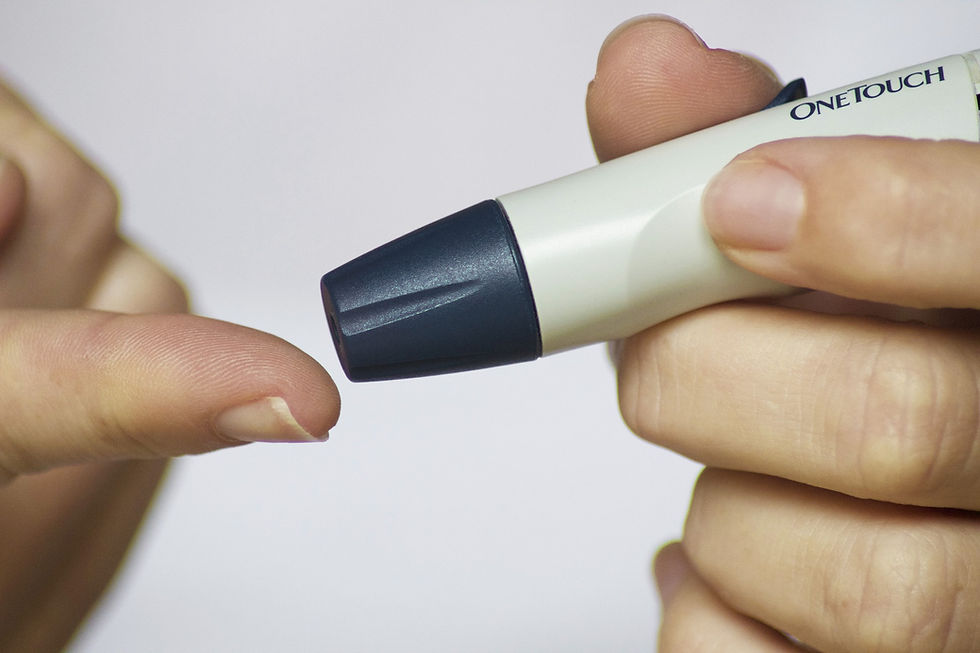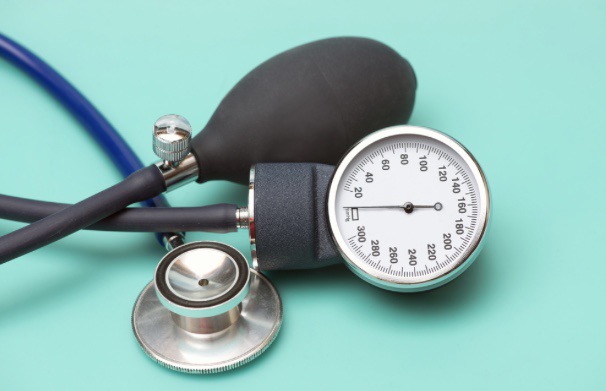A Guide to Diabetes Care Products: What You Need to Know
- Cantus's Pharmacy
- Nov 5, 2023
- 5 min read
Almost 1 in 10 Americans suffers from diabetes – A total of about 37.3 million individuals. With its ability to create complications throughout the body, from vision problems to nerve problems, heart disease to kidney disease, managing this illness is critical to living a long and healthy life.
Fortunately, since insulin was discovered about 100 years ago, great advances have been made in the management of diabetes. WIth a wide array of products and tools from which to choose, you may need some help sorting between the essential diabetes care products and the less important. Let us help you stay in control of your health with this comprehensive guide to the most important products for diabetes care.
Blood Sugar Monitoring
One of the most frequent and important tasks in managing your diabetes is monitoring your blood sugar levels. By tracking how your body responds throughout the day and the week, you can figure out which foods work best for your body and which do not. Plus, your doctor will be able to more accurately evaluate your need to adjust, or begin, medications over time.
Your doctor should recommend a schedule for testing, based on your diet, lifestyle, type of diabetes and more. However, every diabetic should test at least a few times a week, and most need to test multiple times a day. You may need to test both before and after meals and snacks, or only after certain meals. Regardless of the requirements around testing for your situation, you will need to keep certain monitoring supplies at home. Here are some of the most important products to keep on hand:
Glucometer
Doctor checking blood sugar level with glucometer. Treatment of diabetes concept.
A glucometer is a small, handheld machine that can analyze a drop or two of blood and determine the blood’s sugar levels in moments. Because they are so small, they are easy to carry with you, making it simple to check your blood sugar even when you are visiting friends, eating at a restaurant or taking a vacation. They also tend to be relatively inexpensive, although your insurance may cover some or all of the cost of purchasing one of these devices.
Diabetic Test Strips
Diabetic test strips are small strips designed to absorb a tiny amount of blood during a finger prick. They are then inserted into the glucometer to be read. You usually use one test strip per test, but if you have trouble with your finger prick, you may need to use more.
Because you cannot monitor your sugar levels without them, you must keep an ample supply on hand at all times. You should also be sure to only use the test strips that are compatible with your glucometer.
Lancets and Needles
In order to obtain the drops of blood necessary to monitor your glucose, you will need a lancet and needles. The lancet usually looks like a small pen. The end comes off, and you can insert a needle inside. You may then select the force with which the needle pricks your finger.
Woman taking injection in her belly because of blood concentration.
To obtain the blood you need, you simply hold the lancet against the tip of a finger and press a button. The lancet quickly pricks your finger with the needle. You may then place a drop or two of blood on the test strip and insert it into the glucometer to get your blood sugar reading.
You will need to make sure that you keep a sufficient supply of needles for your lancet. You may also need to keep certain needles on hand to ensure compatibility with your lancet.
Sharps Container
Each lancet needle may only be used once. That creates a steady flow of used needles that you will need to dispose of safely. Do not just place them in the trash or leave them laying around. Instead, invest in a sharps container that is clearly marked as holding waste and can be sealed once full. You may then dispose of the sharps container without risking injury to anyone who may handle it.
Continuous Glucose Monitor
A final option for monitoring your blood sugar levels is a continuous glucose monitor (CGM). This device works through a needle inserted under your skin. It measures your glucose every few minutes, allowing you to check your levels at will, without constant finger pricking.
A CGM is not an essential diabetic supply for many diabetics. However, your doctor may determine that a CGM can benefit you. If prescribed, make sure to use it as directed to maintain your health over the long term.
Blood Sugar Control
In addition to monitoring your blood sugar, you will likely need to take steps to keep it under control. While diet and exercise are usually the place to start, you may also require insulin or medications to help your body process the sugar in your blood. If your doctor prescribes one of these substances, you should make sure to keep your prescription at hand and take it exactly as prescribed. Here are some of the essential diabetic care supplies you may need to regulate your blood sugar.
Child with diabetes measuring glucose or blood level in a kitchen.
Insulin
Insulin is a hormone produced by the pancreas. If your pancreas is underproducing insulin, or not producing any at all, your doctor may have you take insulin through injection several times a day.
One of the most common ways to take insulin is with an insulin pen. This pen allows you to dial in your dosage of the hormone and insert a needle into the pen every time you give yourself a dose. You then insert the (small) needle into your skin and press on the bottom of the pen to inject the selected dose of insulin.
Other forms of taking insulin include using a syringe to draw insulin from a bottle, inhaling insulin, or using an insulin pump.
Insulin Pump
An insulin pump is not necessary for every diabetic. However, for diabetics who need more precise and ongoing control over their blood sugar levels, an insulin pump may be an important part of their disease management.
An insulin pump is a small machine that you place unobtrusively under clothing. It uses a catheter and needle, which you place under your skin, to deliver insulin. Depending on your needs, your pump may deliver a continuous drip of insulin or a dose at specified times (e.g. Mealtimes).
Some insulin pumps can even monitor your blood sugar and alert you to extreme fluctuations. As a result, they tend to reduce the amount of pricking and injecting you must do, and deliver greater control of your blood sugar and insulin doses.
Diabetic Medications
Close up 60s old woman pours out from bottle pills time to take medicaments, cure for memory loss, high blood pressure or cholesterol level remedy pain killer drugs, senile diseases treatments concept
There are also oral medications that you may be prescribed for your diabetes. Metformin is perhaps the most effective and well-known of these. Ingested as a pill, metformin reduces the amount of glucose (sugar) your body absorbs from your meals, helping to lower your blood sugar levels. Other types of medications you may take include the following:
Meglitinides
Thiazolidinediones
Sulfonylureas
And more
Before taking any of these medications, make sure you understand any potential side effects they may cause. Your doctor can help you evaluate which medication will best help you to keep your diabetes under control.
Glucose Tablets
Finally, even with careful monitoring and medications, you may occasionally experience dips in your blood sugar. At these times, you may need glucose tablets to give your body a quick infusion of glucose to stabilize your levels.
Glucose tablets are sugar pills that rapidly counteract the effects of hypoglycemia – A not uncommon condition that occurs among diabetics, particularly those who are just learning how to regulate their levels. Take these when your blood sugar reading is below 70 mg/dL.
If you have diabetes, you and your healthcare team will work together to keep your levels under control and avoid long-term complications. At Cantu’s Pharmacy, we have the diabetic care products you need to take charge of your health. Just let us know how we can help!

.png)




Comments